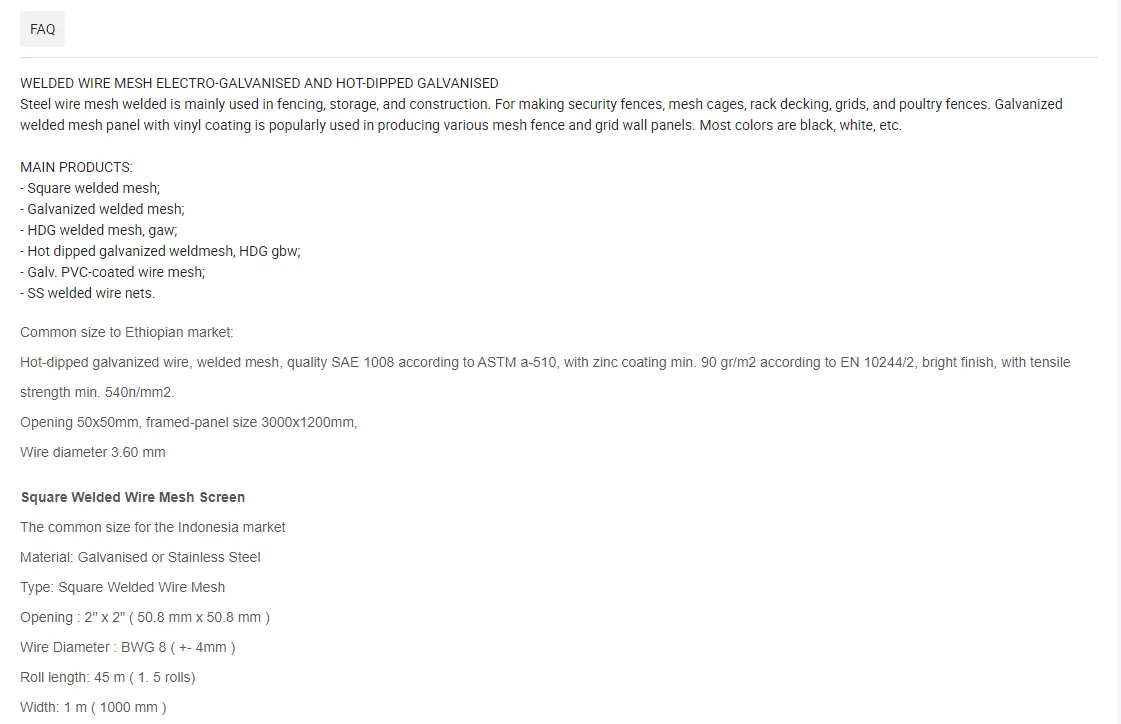The Versatility and Aesthetics of Perforated Metal Sheet Cladding
In contemporary architecture, the choice of materials plays a pivotal role in the aesthetic and functional qualities of a building. One material that has gained significant popularity is perforated metal sheet cladding. This innovative architectural solution combines practical benefits with striking visual appeal, making it an ideal choice for a variety of applications in both commercial and residential buildings.
Perforated metal sheets are sheets of metal that have been punched or drilled with a pattern of holes, which can vary in size, shape, and arrangement. This not only allows for creative expression in design but also enables several functional properties. The use of perforated sheets for cladding provides effective weather resistance, durability, and low maintenance needs, which are crucial factors in the longevity of a building.
One of the most salient benefits of perforated metal sheet cladding is its ability to control light and air flow. The perforated patterns can be customized to allow natural light to filter through while simultaneously offering privacy. This is particularly advantageous in urban environments where buildings are closely situated. The design allows for a softer diffusion of light, reducing the harsh contrast between indoor and outdoor environments and enhancing the natural ambiance of interiors.
Furthermore, the ventilation properties of perforated sheets contribute to energy efficiency. In commercial buildings, they can reduce heat buildup and improve air circulation, lowering reliance on mechanical heating and cooling systems. This aspect not only contributes to sustainability efforts but also reduces energy costs, making it an economical choice in the long run.
perforated metal sheet cladding

Aesthetically, perforated metal cladding offers architects and designers a unique canvas to work with. The variety of hole patterns can serve as a statement piece or as a complementary element to the overall architectural concept. Designers often utilize the cladding as a means to create visual interest, with the interplay of light and shadow playing a crucial role. When illuminated at night, buildings clad in perforated metal can achieve a stunning silhouette, enhancing the building’s presence in the urban landscape.
Moreover, perforated metal sheets can be finished in a variety of colors and textures, allowing for additional customization. The ability to integrate branding into the façade of a building has made perforated cladding particularly appealing for commercial properties. Companies can use their color schemes and branding elements to create a visual identity that resonates with their target audience, all while maintaining a modern and sophisticated look.
Another significant advantage is the material’s recyclability. As society increasingly prioritizes sustainability, using materials like perforated metal, which can be recycled and repurposed, becomes essential. This aligns with the growing trend of sustainable architecture, where environmental impact is a key consideration in building design.
In conclusion, perforated metal sheet cladding stands as a testament to the marriage of form and function in modern architecture. Its ability to offer light and air control, energy efficiency, versatility in design, and sustainability makes it a highly sought-after material. As architects continue to explore innovative designs and sustainable practices, perforated metal sheets are poised to play a significant role in shaping the future of architectural aesthetics and functionality. Embracing this material opens up a plethora of possibilities, ensuring that buildings are not only visually appealing but also enhance the liveability of the spaces they define.
-
Comprehensive Guide to Steel Grating Price and Its Global Impact
NewsNov.24,2025
-
Understanding Heavy Duty Steel Grating Price: Global Insights & Industry Trends
NewsNov.23,2025
-
Essential Guide to Wire Mesh Grating: Uses, Benefits & Innovations
NewsNov.23,2025
-
Welded Steel Bar Grating: Durable Solutions for Industrial Walkways & Infrastructure
NewsNov.22,2025
-
Wedge Wire Drain Solutions: Durable, Efficient Water Filtration and Drainage
NewsNov.22,2025
-
Comprehensive Guide to Twisted Bar Grating – Uses, Benefits & Future Trends
NewsNov.22,2025
Subscribe now!
Stay up to date with the latest on Fry Steeland industry news.

